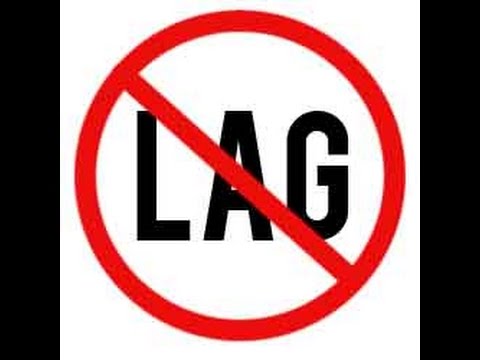How Gaming Lag Might be Holding You Back



Internet or Network Lag

This is the lag which is usually the most visible. Back in the day (I might be dating myself a bit here), most of us had no choice but to play online games over dial-up modems. These old things were only capable of transmitting small amounts of data at a time, and even in that, they were not particularly quick. In effect, this meant that when somebody performed an action in an online game that action would have to be compressed, sent, processed and resent to the other players.
Today, the increase in bandwidth and general processing speed mean we don’t quite have the worries we used to – but some issues do persist.
The most common mistake which people commit is the use of wireless technology for gaming. There is no denying just how useful WiFi is, and for most tasks it operates perfectly well. In online gaming, however, WiFi is a constant problem.
The issue is one of dropped data. Data transferred over a cable is very reliable. Data transmitted over WiFi, however, is not. Here the signals might bounce around a lot, and there are dropped connections occurring all over the place. While the systems which use WiFi take this into account, the issue still remains. Introduce this into a gaming environment, where speed and accuracy are key, are you are left with lag which can have an enormous negative impact on your performance.
In short – use a wired connection whenever possible. If this is not possible then you can at least mitigate some issues by locating the WiFi router closer to your gaming system.
Also, important to remember is the issue of lag is also one of distance. Most veteran users already understand this, but the idea is simple – data can only move so fast. The farther from a server you are the longer it will take your game to receive data. Because of this, you should be sure to select a gaming server as close to your physical location as you can, whenever possible.
Screen Lag
To fall back into ye-olden-days again – who reading this remembers CRT displays? Incredibly heavy, cumbersome and space-consuming, these outdated style displays come with a very real advantage – a lack of display lag.

In modern LCD and Plasma screens, there is a slight delay in between when a screen receives information and when it displays the information. This is usually only a very small delay, but when playing a game which requires dead-accurate timing every millisecond counts. Because of this, it is important to keep in mind the delay and what effect it might have on your success rate.
While there is a lot of variances when it comes to what people find acceptable, a good general rule of thumb is to not use a screen which exceeds 14ms of display lag. The lower this lag the more responsive the game will feel, and the better and more accurately the player can perform.
Some screens, especially those T.V screens used for gaming, having some sort of gaming mode option available in the settings. Be sure to enable this, if you can, as it can help cut down on lag and some other effects which hurt gaming. The motion blur on my screen, before I turned it off, made many games near unplayable.
There is a reason why professional fighting-game player like carry around CRT screens to tournaments, and it’s not nostalgia, or because they hate their backs.
Input Lag
The final main type of lag, and one which is not a concern for many people. This is an issue which raises its head through two main gaps – those of adapters and wireless technology.
Using adaptors in order to connect a certain type of socket to another can be a great and simple way to overcome issues of compatibility, but this can also introduce a slight amount of lag to the commands which are being inputted. This means each click might take a little longer to go through, and this could be the difference between a win and a loss.
If possible, you should try to avoid using adaptors or extenders, and go with direct connections.
More commonly the problem again comes back to wireless technology. Again, wireless can be so much more convenient, but the nature of the connections means that a slight amount of delay can creep in. Go wired, when you can.
Another thing to keep in mind is that these issues can become compounded when they occur together. A small amount of lag on each of these three areas can combine to push you over the thresholds of professional play. While the playing field might be a little closer when it comes to console gaming, PC gaming is another beast altogether. We aren’t saying that it is impossible to beat a similarly skilled player if you suffer from lag problems, but it will be much more difficult than it would be otherwise.


